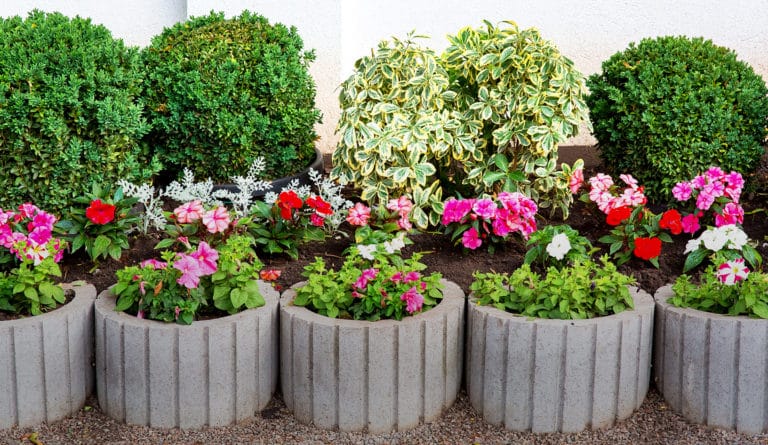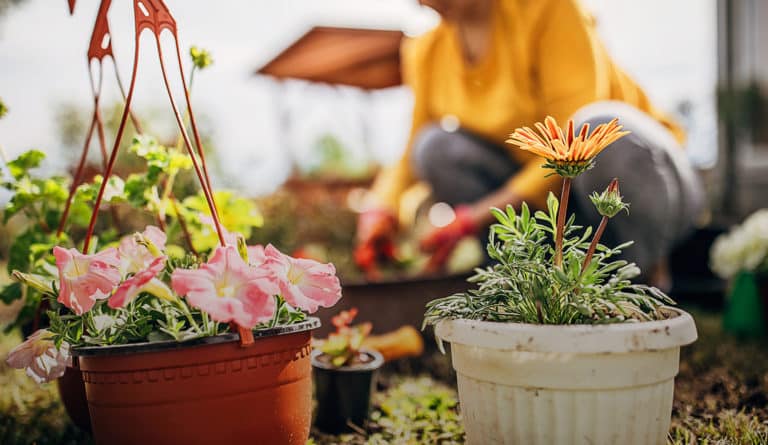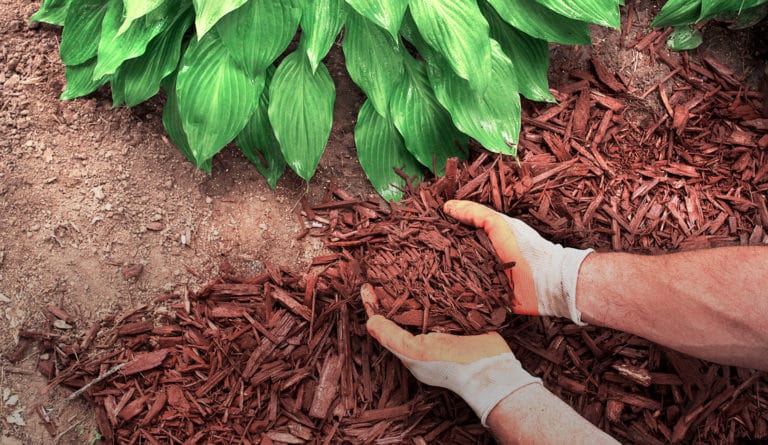- Microgreen seeds. From kale, spinach, radish, broccoli, beets and wheatgrass, when it comes to microgreens, the sky (and soil!) is the limit
- Misting bottle filled with water
- Upcycled plastic or aluminum take-out container or plate
- Miracle-Gro® Seed Starting Potting Mix
- Plastic wrap
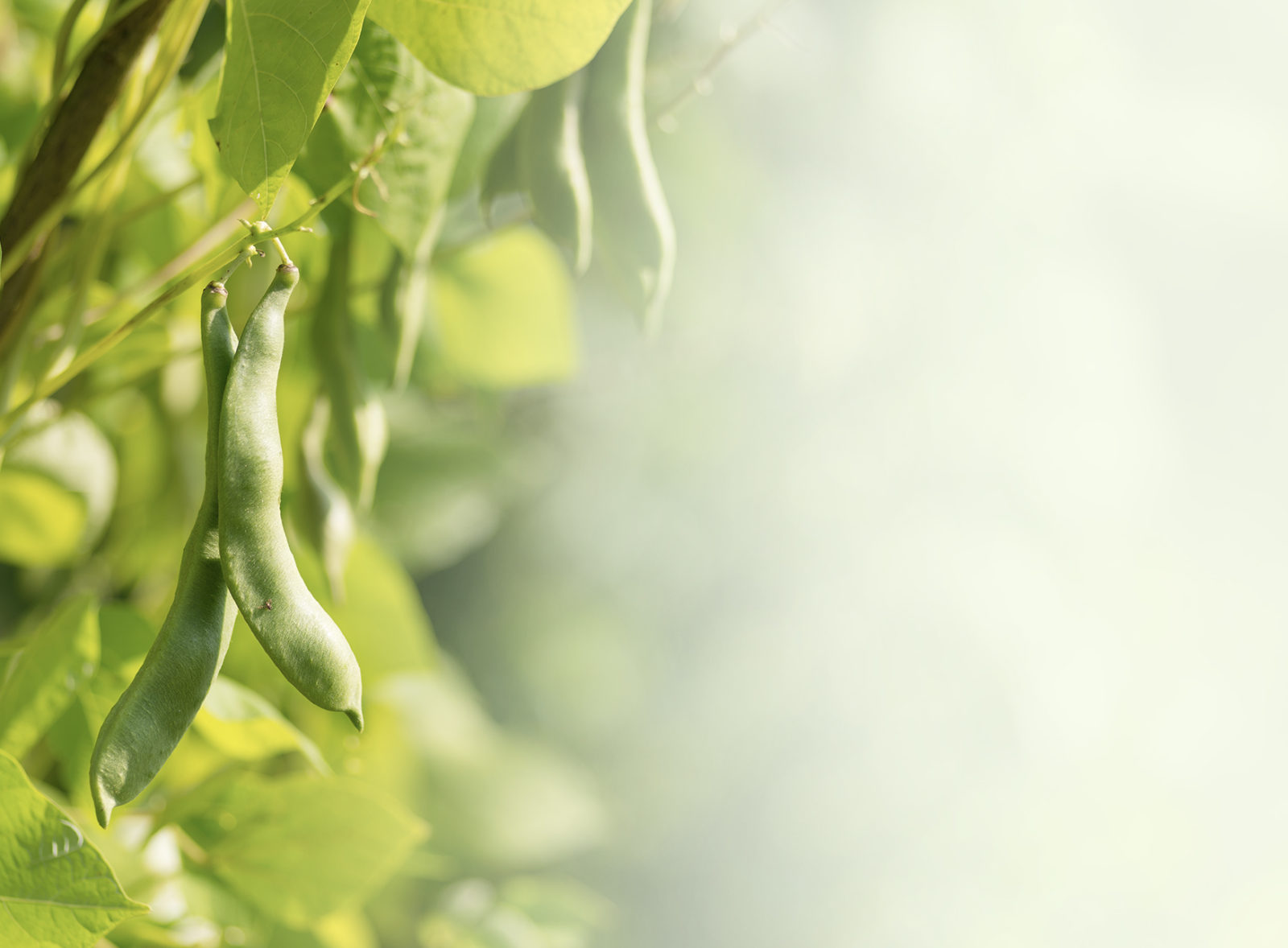
green beans
aka Phaseolus Vulgaris
Bean gardeners also become accomplished engineers. Their fast-growing vines need poles, strings, trellises… there are so many varieties and so many ways to train them.
variations
There are many variations of green beans, such as: pinto beans, lima beans, wax beans, Romano beans, and Royal Burgundy
light
full sun
These rapid-growing veggies like 6 to 8 hours of solar power.
water + feeding
average needs
Water the plants once a week in dry weather. Keep an eagle eye on the soil when the beans are blooming and starting their little pods. Do not let the soil dry out during this key time. Dry conditions can cause your blooms to drop too early and that will reduce your bean count. Consistent soil moisture yields the best quality harvest. Water thoroughly once a week if there’s no rain.
toxic
basically non-toxic
Some beans may upset the digestion of cats and dogs. Green beans are generally safe in small quantities.
size
small to medium
Bush beans grow to 2 feet tall and are the stand alone variety. Staked or pole beans can grow an impressive 10 to 15 feet along, or even straight up.
pro tip
don’t start indoors
They have fragile roots, that don’t transplant well. The good new? Beans grow so quickly (about 45 days from planting to harvest) that you don’t need to start them early.
fun fact
we’re number three!
After tomatoes, and then peppers, beans are the most beloved garden vegetable.
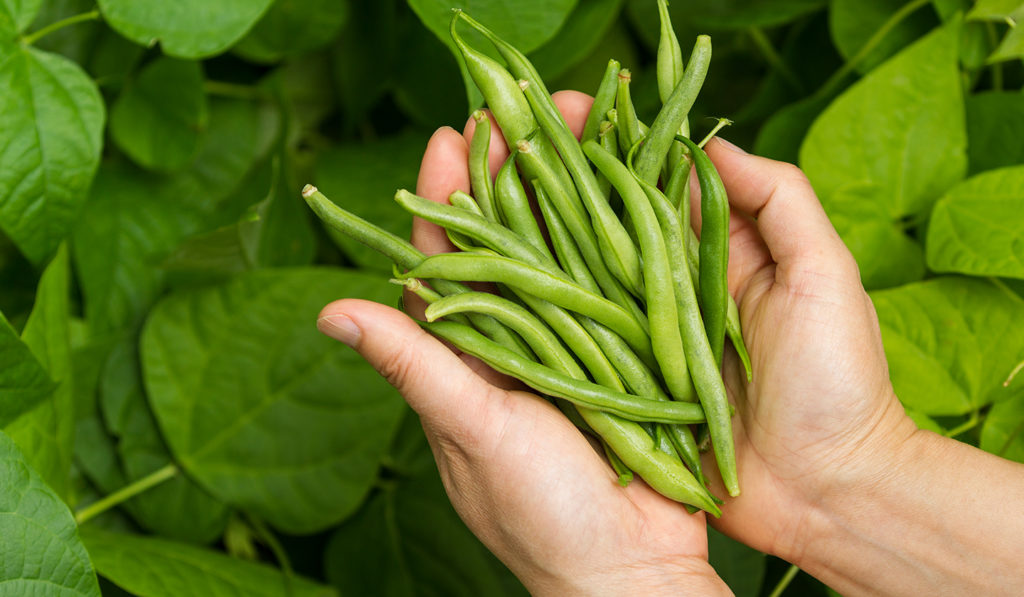
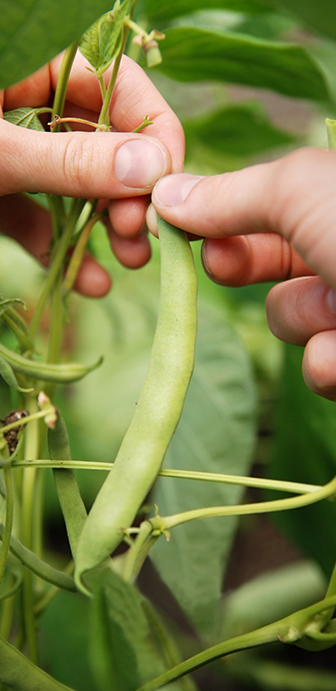
beyond the basics
-
soil & potting
Bush beans: Don’t plant too early. Beans grow quickly and like warm conditions. Plant seeds in rows, 1 inch deep and 1 to 2 inches apart. Space the rows 2½ to 3 feet apart. Once the beans sprout, thin out half the shoots so your plants are 3 to 4 inches apart.
Pole beans: Don’t plant too early. Beans grow quickly and like warm conditions. Till the soil to a depth of 8 to 10 inches, breaking up large clods of earth. Plant 3 to 4 seeds together in raised mounds. Seeds should be 1 inch under the surface. Space your mounds 3 to 4 feet apart in neat rows. Firmly insert a 6- to 8-foot stake in the center of each mound.
-
companion planting
Carrots, cabbage, cauliflower Brussel sprouts, celery, kale, lettuce, parsley, peas, spinach strawberries, Swiss chard and tomatoes, make excellent companions for green beans.
-
harvesting
Depends on the variety, but generally speaking, overmature beans grow tough and less tender. Green beans are ready to pick when they reach the size of a half-used pencil. Pick gently to avoid damaging the plant.
-
pest control
Beans a hardy, speedy growers but they are susceptible to pests. The western spotted cucumber beetle can ravage green bean plants. This beetle is shaped kind of like a ladybug, and has yellow-green back with 12 large dots. Aphids are another green been pest. Check under you leaves regularly for clusters of these tiny yellowish-green bugs. Other insect pests of green beans include thrips, whiteflies, leafhoppers and Mexican bean beetles. All can be managed with a safe pest spray like Ortho® Bug B Gon® ECO Insecticide.
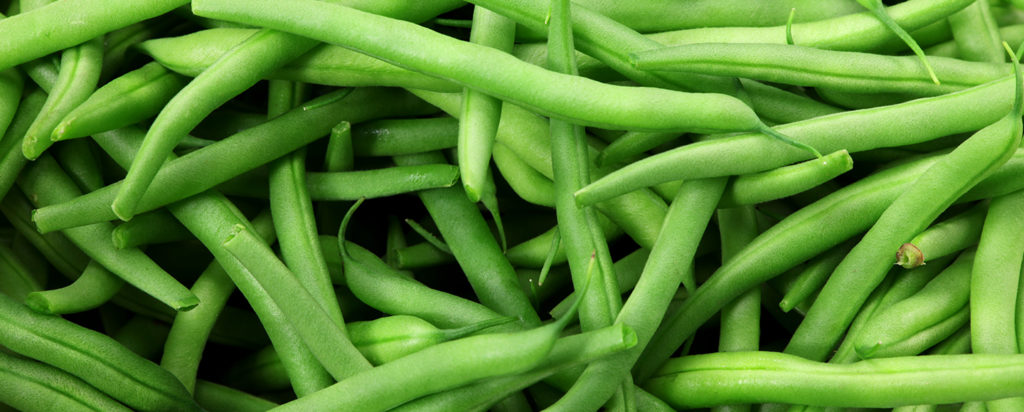
troubleshooting
-
yellowing leaves?
Could be a fungal infection known as Anthracnose. This disease causes reddish brown marks known as “rust” on the leaves and vines. Apply a fungicide soap. Long term tip: rotate your crops to help fight this problem.
-
why the curling leaves?
Could be Aphids or Whiteflies. Check under the leaves for sap-sucking Aphids (tiny, usually yellowish-green clusters of bugs ). Whiteflies are small bugs with white wings. They aren’t directly harmful to your beans, but they can carry the Cucurbit Leaf Crumple Virus. Fight these pests with a gentle insecticide like Ortho® Bug B Gon® ECO Insecticide . Don’t plant anything new near the plants that you’re treating.
-
why aren’t my bean plants flowering?
Soil isn’t warm enough. Beans love warm soil and don’t grow well when it’s cold. They grow so fast that you can start later in the growing season. Plant in warm, sunny spots. Not enough water could also be the issue. Moist soil is especially important during flowering and the early pod stage. Another common mistake is using too much fertilizer. Beans have the amazing and rare ability to pull nitrogen from the air, so they don’t need nitrogen fertilizer in their soil. High nitrogen generally makes food plants grow lots of greenery and not many flowers. A garden centre can test your soil nitrogen levels if you want to get scientific.
-
i had lots of flowers, but no pods grew, why?
Most beans are self-pollinating plants that don’t require bees or other helpful bugs. But some DO need pollinators. Check to see which type you have.
If you do need pollinators, plant some bright, colourful flowers in your garden to attract pollinators. In the short term, you can be the bee! Get a small paintbrush and gently spread pollen around all your flowers.
-
why the wilting vines?
Damage at the base of the vine. Did a bean pole shift? Did string wind flip over your bean bush? Protect that base by firmly securing poles and make sure everything is secure. If you have a firmly secured pole in place before you plant your seedlings, you can often avoid this problem.

green beans
aka Phaseolus Vulgaris
Bean gardeners also become accomplished engineers. Their fast-growing vines need poles, strings, trellises… there are so many varieties and so many ways to train them.
variations
There are many variations of green beans, such as: pinto beans, lima beans, wax beans, Romano beans, and Royal Burgundy
light
full sun
These rapid-growing veggies like 6 to 8 hours of solar power.
water + feeding
average needs
Water the plants once a week in dry weather. Keep an eagle eye on the soil when the beans are blooming and starting their little pods. Do not let the soil dry out during this key time. Dry conditions can cause your blooms to drop too early and that will reduce your bean count. Consistent soil moisture yields the best quality harvest. Water thoroughly once a week if there’s no rain.
toxic
basically non-toxic
Some beans may upset the digestion of cats and dogs. Green beans are generally safe in small quantities.
size
small to medium
Bush beans grow to 2 feet tall and are the stand alone variety. Staked or pole beans can grow an impressive 10 to 15 feet along, or even straight up.
pro tip
don’t start indoors
They have fragile roots, that don’t transplant well. The good new? Beans grow so quickly (about 45 days from planting to harvest) that you don’t need to start them early.
fun fact
we’re number three!
After tomatoes, and then peppers, beans are the most beloved garden vegetable.
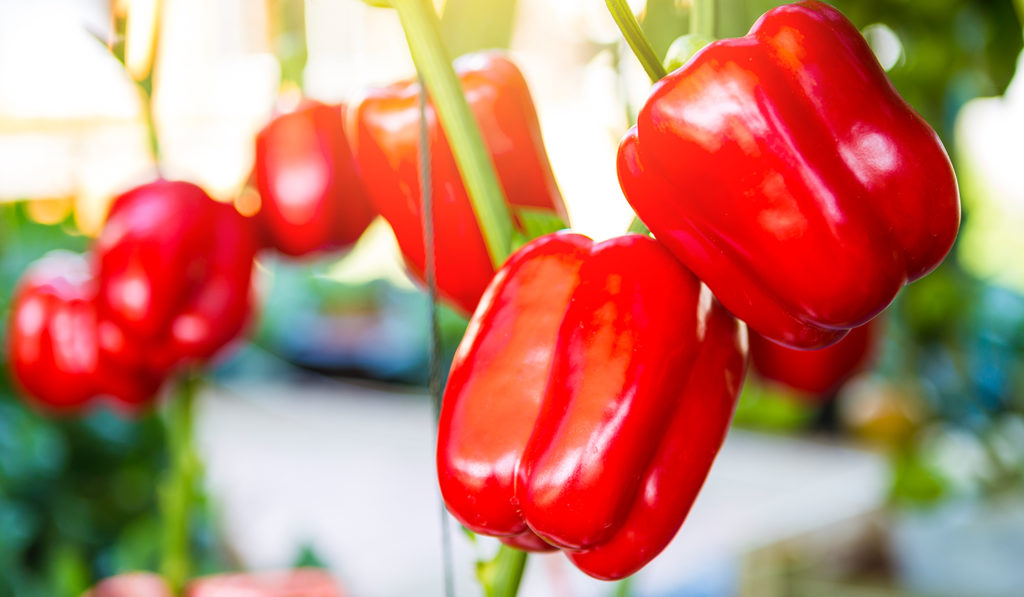

beyond the basics
-
soil & potting
Bush beans: Don’t plant too early. Beans grow quickly and like warm conditions. Plant seeds in rows, 1 inch deep and 1 to 2 inches apart. Space the rows 2½ to 3 feet apart. Once the beans sprout, thin out half the shoots so your plants are 3 to 4 inches apart.
Pole beans: Don’t plant too early. Beans grow quickly and like warm conditions. Till the soil to a depth of 8 to 10 inches, breaking up large clods of earth. Plant 3 to 4 seeds together in raised mounds. Seeds should be 1 inch under the surface. Space your mounds 3 to 4 feet apart in neat rows. Firmly insert a 6- to 8-foot stake in the center of each mound.
-
companion planting
Carrots, cabbage, cauliflower Brussel sprouts, celery, kale, lettuce, parsley, peas, spinach strawberries, Swiss chard and tomatoes, make excellent companions for green beans.
-
harvesting
Depends on the variety, but generally speaking, overmature beans grow tough and less tender. Green beans are ready to pick when they reach the size of a half-used pencil. Pick gently to avoid damaging the plant.
-
pest control
Beans a hardy, speedy growers but they are susceptible to pests. The western spotted cucumber beetle can ravage green bean plants. This beetle is shaped kind of like a ladybug, and has yellow-green back with 12 large dots. Aphids are another green been pest. Check under you leaves regularly for clusters of these tiny yellowish-green bugs. Other insect pests of green beans include thrips, whiteflies, leafhoppers and Mexican bean beetles. All can be managed with a safe pest spray like Ortho® Bug B Gon® ECO Insecticide.
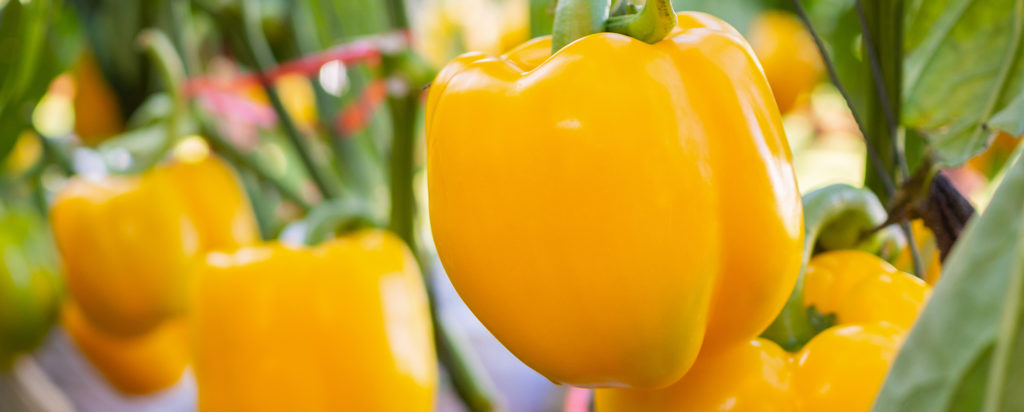
troubleshooting
-
yellowing leaves?
Could be a fungal infection known as Anthracnose. This disease causes reddish brown marks known as “rust” on the leaves and vines. Apply a fungicide soap. Long term tip: rotate your crops to help fight this problem.
-
why the curling leaves?
Could be Aphids or Whiteflies. Check under the leaves for sap-sucking Aphids (tiny, usually yellowish-green clusters of bugs ). Whiteflies are small bugs with white wings. They aren’t directly harmful to your beans, but they can carry the Cucurbit Leaf Crumple Virus. Fight these pests with a gentle insecticide like Ortho® Bug B Gon® ECO Insecticide . Don’t plant anything new near the plants that you’re treating.
-
why aren’t my bean plants flowering?
Soil isn’t warm enough. Beans love warm soil and don’t grow well when it’s cold. They grow so fast that you can start later in the growing season. Plant in warm, sunny spots. Not enough water could also be the issue. Moist soil is especially important during flowering and the early pod stage. Another common mistake is using too much fertilizer. Beans have the amazing and rare ability to pull nitrogen from the air, so they don’t need nitrogen fertilizer in their soil. High nitrogen generally makes food plants grow lots of greenery and not many flowers. A garden centre can test your soil nitrogen levels if you want to get scientific.
-
i had lots of flowers, but no pods grew, why?
Most beans are self-pollinating plants that don’t require bees or other helpful bugs. But some DO need pollinators. Check to see which type you have.
If you do need pollinators, plant some bright, colourful flowers in your garden to attract pollinators. In the short term, you can be the bee! Get a small paintbrush and gently spread pollen around all your flowers.
-
why the wilting vines?
Damage at the base of the vine. Did a bean pole shift? Did string wind flip over your bean bush? Protect that base by firmly securing poles and make sure everything is secure. If you have a firmly secured pole in place before you plant your seedlings, you can often avoid this problem.

green beans
aka Phaseolus Vulgaris
Bean gardeners also become accomplished engineers. Their fast-growing vines need poles, strings, trellises… there are so many varieties and so many ways to train them.
variations
There are many variations of green beans, such as: pinto beans, lima beans, wax beans, Romano beans, and Royal Burgundy
light
full sun
These rapid-growing veggies like 6 to 8 hours of solar power.
water + feeding
average needs
Water the plants once a week in dry weather. Keep an eagle eye on the soil when the beans are blooming and starting their little pods. Do not let the soil dry out during this key time. Dry conditions can cause your blooms to drop too early and that will reduce your bean count. Consistent soil moisture yields the best quality harvest. Water thoroughly once a week if there’s no rain.
toxic
basically non-toxic
Some beans may upset the digestion of cats and dogs. Green beans are generally safe in small quantities.
size
small to medium
Bush beans grow to 2 feet tall and are the stand alone variety. Staked or pole beans can grow an impressive 10 to 15 feet along, or even straight up.
pro tip
don’t start indoors
They have fragile roots, that don’t transplant well. The good new? Beans grow so quickly (about 45 days from planting to harvest) that you don’t need to start them early.
fun fact
we’re number three!
After tomatoes, and then peppers, beans are the most beloved garden vegetable.
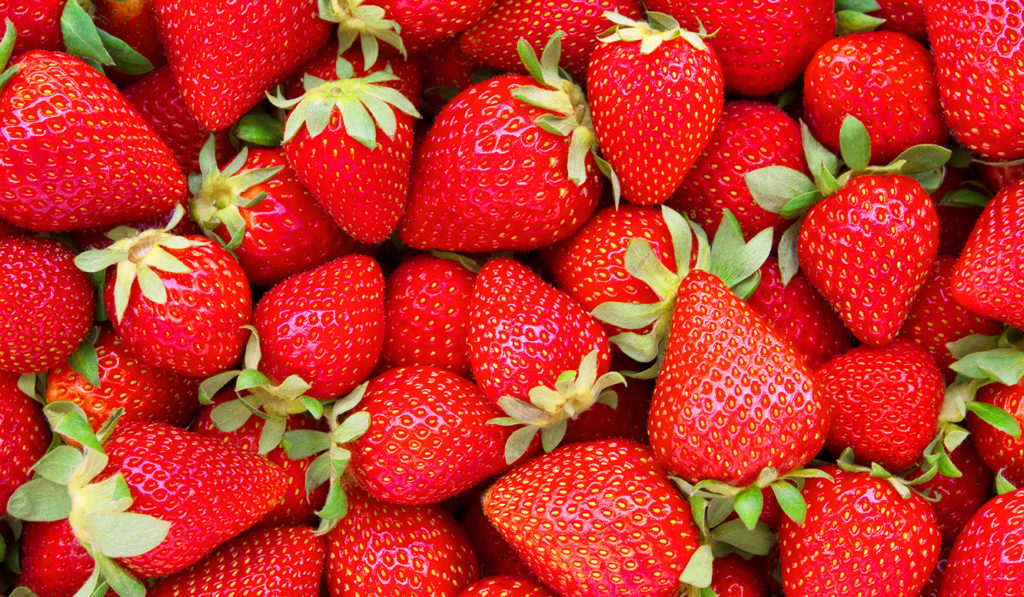

beyond the basics
-
soil & potting
Bush beans: Don’t plant too early. Beans grow quickly and like warm conditions. Plant seeds in rows, 1 inch deep and 1 to 2 inches apart. Space the rows 2½ to 3 feet apart. Once the beans sprout, thin out half the shoots so your plants are 3 to 4 inches apart.
Pole beans: Don’t plant too early. Beans grow quickly and like warm conditions. Till the soil to a depth of 8 to 10 inches, breaking up large clods of earth. Plant 3 to 4 seeds together in raised mounds. Seeds should be 1 inch under the surface. Space your mounds 3 to 4 feet apart in neat rows. Firmly insert a 6- to 8-foot stake in the center of each mound.
-
companion planting
Carrots, cabbage, cauliflower Brussel sprouts, celery, kale, lettuce, parsley, peas, spinach strawberries, Swiss chard and tomatoes, make excellent companions for green beans.
-
harvesting
Depends on the variety, but generally speaking, overmature beans grow tough and less tender. Green beans are ready to pick when they reach the size of a half-used pencil. Pick gently to avoid damaging the plant.
-
pest control
Beans a hardy, speedy growers but they are susceptible to pests. The western spotted cucumber beetle can ravage green bean plants. This beetle is shaped kind of like a ladybug, and has yellow-green back with 12 large dots. Aphids are another green been pest. Check under you leaves regularly for clusters of these tiny yellowish-green bugs. Other insect pests of green beans include thrips, whiteflies, leafhoppers and Mexican bean beetles. All can be managed with a safe pest spray like Ortho® Bug B Gon® ECO Insecticide.
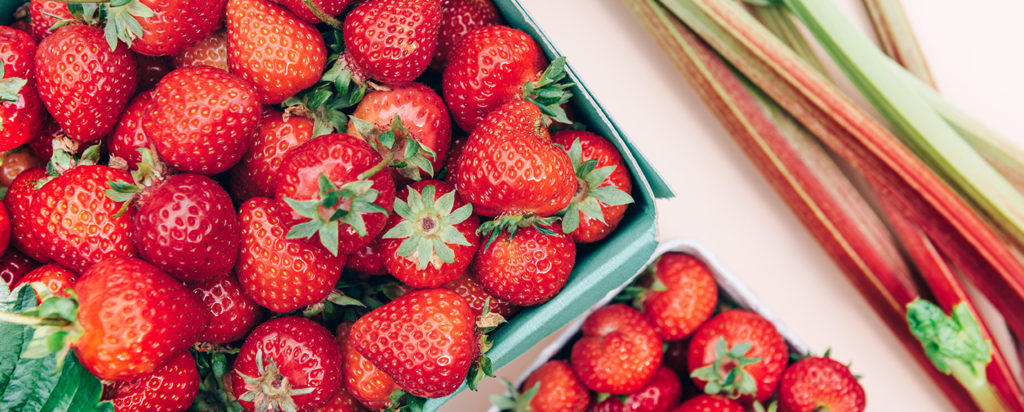
troubleshooting
-
yellowing leaves?
Could be a fungal infection known as Anthracnose. This disease causes reddish brown marks known as “rust” on the leaves and vines. Apply a fungicide soap. Long term tip: rotate your crops to help fight this problem.
-
why the curling leaves?
Could be Aphids or Whiteflies. Check under the leaves for sap-sucking Aphids (tiny, usually yellowish-green clusters of bugs ). Whiteflies are small bugs with white wings. They aren’t directly harmful to your beans, but they can carry the Cucurbit Leaf Crumple Virus. Fight these pests with a gentle insecticide like Ortho® Bug B Gon® ECO Insecticide . Don’t plant anything new near the plants that you’re treating.
-
why aren’t my bean plants flowering?
Soil isn’t warm enough. Beans love warm soil and don’t grow well when it’s cold. They grow so fast that you can start later in the growing season. Plant in warm, sunny spots. Not enough water could also be the issue. Moist soil is especially important during flowering and the early pod stage. Another common mistake is using too much fertilizer. Beans have the amazing and rare ability to pull nitrogen from the air, so they don’t need nitrogen fertilizer in their soil. High nitrogen generally makes food plants grow lots of greenery and not many flowers. A garden centre can test your soil nitrogen levels if you want to get scientific.
-
i had lots of flowers, but no pods grew, why?
Most beans are self-pollinating plants that don’t require bees or other helpful bugs. But some DO need pollinators. Check to see which type you have.
If you do need pollinators, plant some bright, colourful flowers in your garden to attract pollinators. In the short term, you can be the bee! Get a small paintbrush and gently spread pollen around all your flowers.
-
why the wilting vines?
Damage at the base of the vine. Did a bean pole shift? Did string wind flip over your bean bush? Protect that base by firmly securing poles and make sure everything is secure. If you have a firmly secured pole in place before you plant your seedlings, you can often avoid this problem.

green beans
aka Phaseolus Vulgaris
Bean gardeners also become accomplished engineers. Their fast-growing vines need poles, strings, trellises… there are so many varieties and so many ways to train them.
variations
There are many variations of green beans, such as: pinto beans, lima beans, wax beans, Romano beans, and Royal Burgundy
light
full sun
These rapid-growing veggies like 6 to 8 hours of solar power.
water + feeding
average needs
Water the plants once a week in dry weather. Keep an eagle eye on the soil when the beans are blooming and starting their little pods. Do not let the soil dry out during this key time. Dry conditions can cause your blooms to drop too early and that will reduce your bean count. Consistent soil moisture yields the best quality harvest. Water thoroughly once a week if there’s no rain.
toxic
basically non-toxic
Some beans may upset the digestion of cats and dogs. Green beans are generally safe in small quantities.
size
small to medium
Bush beans grow to 2 feet tall and are the stand alone variety. Staked or pole beans can grow an impressive 10 to 15 feet along, or even straight up.
pro tip
don’t start indoors
They have fragile roots, that don’t transplant well. The good new? Beans grow so quickly (about 45 days from planting to harvest) that you don’t need to start them early.
fun fact
we’re number three!
After tomatoes, and then peppers, beans are the most beloved garden vegetable.
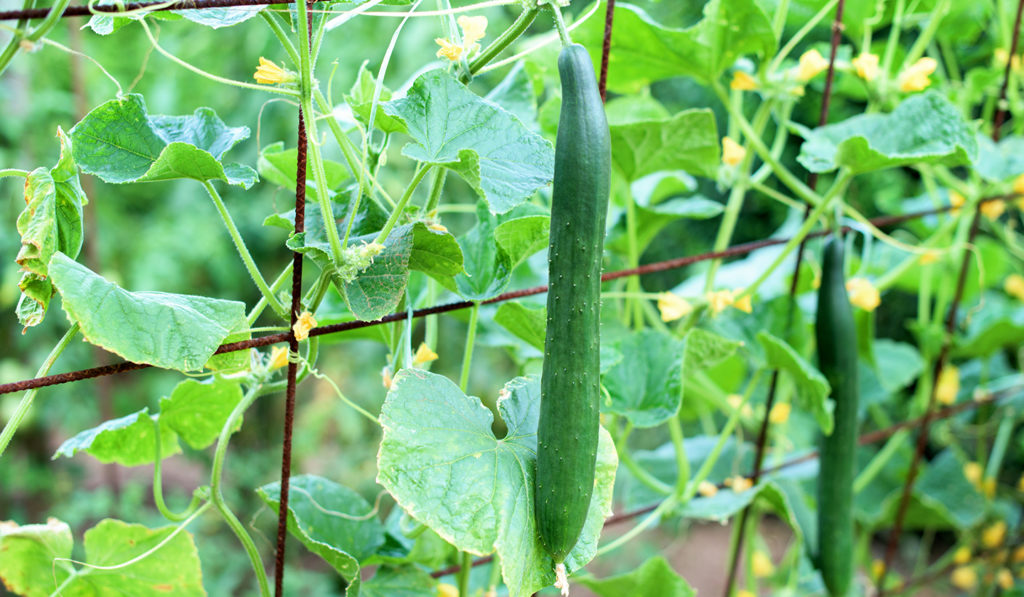

beyond the basics
-
soil & potting
Bush beans: Don’t plant too early. Beans grow quickly and like warm conditions. Plant seeds in rows, 1 inch deep and 1 to 2 inches apart. Space the rows 2½ to 3 feet apart. Once the beans sprout, thin out half the shoots so your plants are 3 to 4 inches apart.
Pole beans: Don’t plant too early. Beans grow quickly and like warm conditions. Till the soil to a depth of 8 to 10 inches, breaking up large clods of earth. Plant 3 to 4 seeds together in raised mounds. Seeds should be 1 inch under the surface. Space your mounds 3 to 4 feet apart in neat rows. Firmly insert a 6- to 8-foot stake in the center of each mound.
-
companion planting
Carrots, cabbage, cauliflower Brussel sprouts, celery, kale, lettuce, parsley, peas, spinach strawberries, Swiss chard and tomatoes, make excellent companions for green beans.
-
harvesting
Depends on the variety, but generally speaking, overmature beans grow tough and less tender. Green beans are ready to pick when they reach the size of a half-used pencil. Pick gently to avoid damaging the plant.
-
pest control
Beans a hardy, speedy growers but they are susceptible to pests. The western spotted cucumber beetle can ravage green bean plants. This beetle is shaped kind of like a ladybug, and has yellow-green back with 12 large dots. Aphids are another green been pest. Check under you leaves regularly for clusters of these tiny yellowish-green bugs. Other insect pests of green beans include thrips, whiteflies, leafhoppers and Mexican bean beetles. All can be managed with a safe pest spray like Ortho® Bug B Gon® ECO Insecticide.
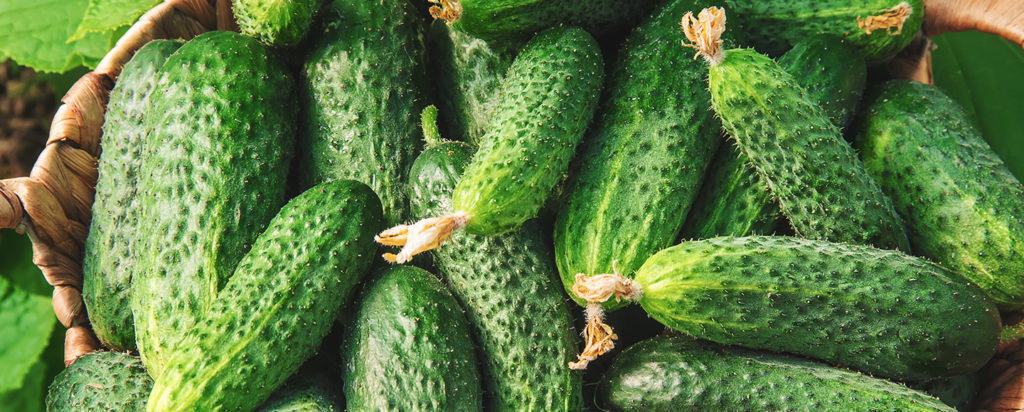
troubleshooting
-
yellowing leaves?
Could be a fungal infection known as Anthracnose. This disease causes reddish brown marks known as “rust” on the leaves and vines. Apply a fungicide soap. Long term tip: rotate your crops to help fight this problem.
-
why the curling leaves?
Could be Aphids or Whiteflies. Check under the leaves for sap-sucking Aphids (tiny, usually yellowish-green clusters of bugs ). Whiteflies are small bugs with white wings. They aren’t directly harmful to your beans, but they can carry the Cucurbit Leaf Crumple Virus. Fight these pests with a gentle insecticide like Ortho® Bug B Gon® ECO Insecticide . Don’t plant anything new near the plants that you’re treating.
-
why aren’t my bean plants flowering?
Soil isn’t warm enough. Beans love warm soil and don’t grow well when it’s cold. They grow so fast that you can start later in the growing season. Plant in warm, sunny spots. Not enough water could also be the issue. Moist soil is especially important during flowering and the early pod stage. Another common mistake is using too much fertilizer. Beans have the amazing and rare ability to pull nitrogen from the air, so they don’t need nitrogen fertilizer in their soil. High nitrogen generally makes food plants grow lots of greenery and not many flowers. A garden centre can test your soil nitrogen levels if you want to get scientific.
-
i had lots of flowers, but no pods grew, why?
Most beans are self-pollinating plants that don’t require bees or other helpful bugs. But some DO need pollinators. Check to see which type you have.
If you do need pollinators, plant some bright, colourful flowers in your garden to attract pollinators. In the short term, you can be the bee! Get a small paintbrush and gently spread pollen around all your flowers.
-
why the wilting vines?
Damage at the base of the vine. Did a bean pole shift? Did string wind flip over your bean bush? Protect that base by firmly securing poles and make sure everything is secure. If you have a firmly secured pole in place before you plant your seedlings, you can often avoid this problem.

green beans
aka Phaseolus Vulgaris
Bean gardeners also become accomplished engineers. Their fast-growing vines need poles, strings, trellises… there are so many varieties and so many ways to train them.
variations
There are many variations of green beans, such as: pinto beans, lima beans, wax beans, Romano beans, and Royal Burgundy
light
full sun
These rapid-growing veggies like 6 to 8 hours of solar power.
water + feeding
average needs
Water the plants once a week in dry weather. Keep an eagle eye on the soil when the beans are blooming and starting their little pods. Do not let the soil dry out during this key time. Dry conditions can cause your blooms to drop too early and that will reduce your bean count. Consistent soil moisture yields the best quality harvest. Water thoroughly once a week if there’s no rain.
toxic
basically non-toxic
Some beans may upset the digestion of cats and dogs. Green beans are generally safe in small quantities.
size
small to medium
Bush beans grow to 2 feet tall and are the stand alone variety. Staked or pole beans can grow an impressive 10 to 15 feet along, or even straight up.
pro tip
don’t start indoors
They have fragile roots, that don’t transplant well. The good new? Beans grow so quickly (about 45 days from planting to harvest) that you don’t need to start them early.
fun fact
we’re number three!
After tomatoes, and then peppers, beans are the most beloved garden vegetable.
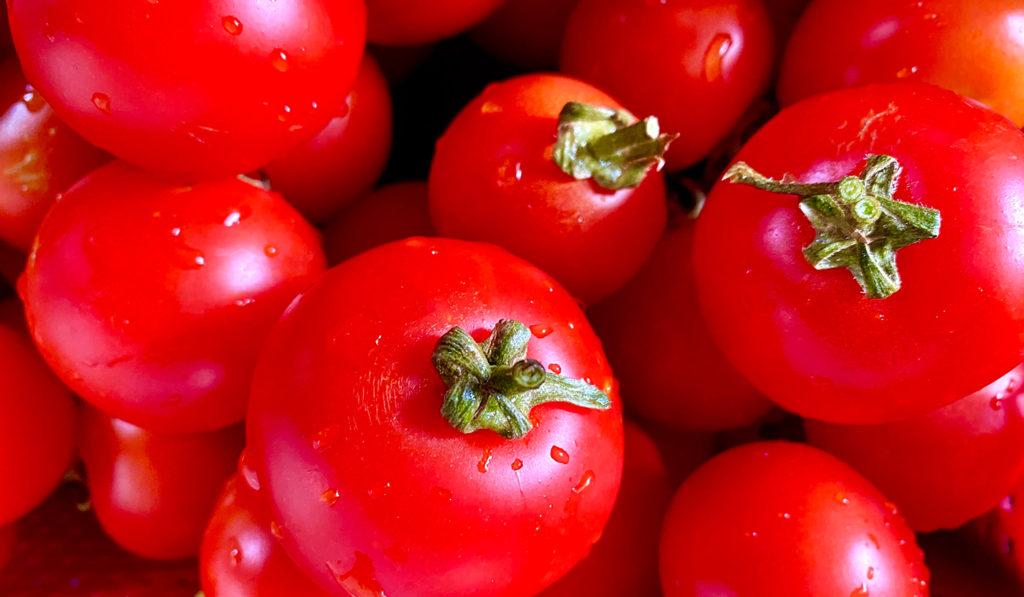

beyond the basics
-
soil & potting
Bush beans: Don’t plant too early. Beans grow quickly and like warm conditions. Plant seeds in rows, 1 inch deep and 1 to 2 inches apart. Space the rows 2½ to 3 feet apart. Once the beans sprout, thin out half the shoots so your plants are 3 to 4 inches apart.
Pole beans: Don’t plant too early. Beans grow quickly and like warm conditions. Till the soil to a depth of 8 to 10 inches, breaking up large clods of earth. Plant 3 to 4 seeds together in raised mounds. Seeds should be 1 inch under the surface. Space your mounds 3 to 4 feet apart in neat rows. Firmly insert a 6- to 8-foot stake in the center of each mound.
-
companion planting
Carrots, cabbage, cauliflower Brussel sprouts, celery, kale, lettuce, parsley, peas, spinach strawberries, Swiss chard and tomatoes, make excellent companions for green beans.
-
harvesting
Depends on the variety, but generally speaking, overmature beans grow tough and less tender. Green beans are ready to pick when they reach the size of a half-used pencil. Pick gently to avoid damaging the plant.
-
pest control
Beans a hardy, speedy growers but they are susceptible to pests. The western spotted cucumber beetle can ravage green bean plants. This beetle is shaped kind of like a ladybug, and has yellow-green back with 12 large dots. Aphids are another green been pest. Check under you leaves regularly for clusters of these tiny yellowish-green bugs. Other insect pests of green beans include thrips, whiteflies, leafhoppers and Mexican bean beetles. All can be managed with a safe pest spray like Ortho® Bug B Gon® ECO Insecticide.
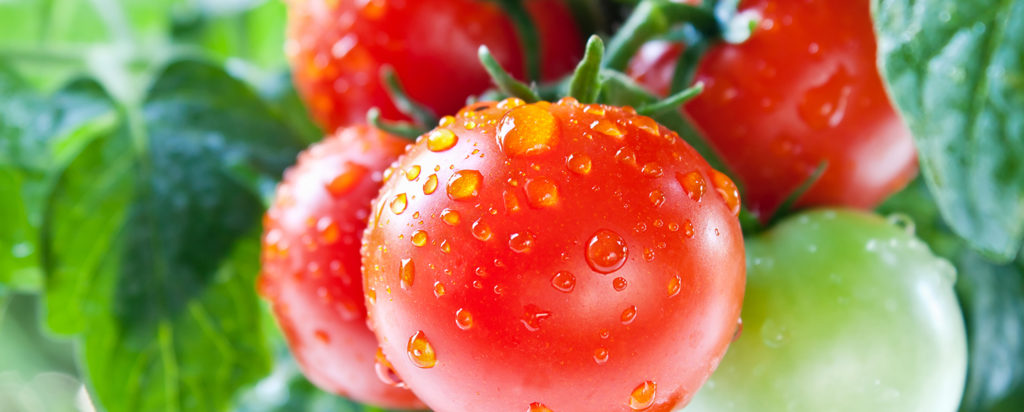
troubleshooting
-
yellowing leaves?
Could be a fungal infection known as Anthracnose. This disease causes reddish brown marks known as “rust” on the leaves and vines. Apply a fungicide soap. Long term tip: rotate your crops to help fight this problem.
-
why the curling leaves?
Could be Aphids or Whiteflies. Check under the leaves for sap-sucking Aphids (tiny, usually yellowish-green clusters of bugs ). Whiteflies are small bugs with white wings. They aren’t directly harmful to your beans, but they can carry the Cucurbit Leaf Crumple Virus. Fight these pests with a gentle insecticide like Ortho® Bug B Gon® ECO Insecticide . Don’t plant anything new near the plants that you’re treating.
-
why aren’t my bean plants flowering?
Soil isn’t warm enough. Beans love warm soil and don’t grow well when it’s cold. They grow so fast that you can start later in the growing season. Plant in warm, sunny spots. Not enough water could also be the issue. Moist soil is especially important during flowering and the early pod stage. Another common mistake is using too much fertilizer. Beans have the amazing and rare ability to pull nitrogen from the air, so they don’t need nitrogen fertilizer in their soil. High nitrogen generally makes food plants grow lots of greenery and not many flowers. A garden centre can test your soil nitrogen levels if you want to get scientific.
-
i had lots of flowers, but no pods grew, why?
Most beans are self-pollinating plants that don’t require bees or other helpful bugs. But some DO need pollinators. Check to see which type you have.
If you do need pollinators, plant some bright, colourful flowers in your garden to attract pollinators. In the short term, you can be the bee! Get a small paintbrush and gently spread pollen around all your flowers.
-
why the wilting vines?
Damage at the base of the vine. Did a bean pole shift? Did string wind flip over your bean bush? Protect that base by firmly securing poles and make sure everything is secure. If you have a firmly secured pole in place before you plant your seedlings, you can often avoid this problem.
small but mighty nutritious, make growing your own microgreens your next micro gardening project.
From fringe, to fad, to being favoured by many, microgreens have experienced quite the publicity journey. Packed with vitamins and with versatile uses, microgreens have become mainstream for health enthusiasts and home gardeners alike.
how microgreens differ from sprouts
Microgreens and sprouts may seem similar but are indeed different. With fully developed leaves, microgreens are in fact just miniature versions of your favorite large leafy greens. Sprouts and shoots on the other hand, although also nutritious, are not mature and do not require soil like microgreens do.

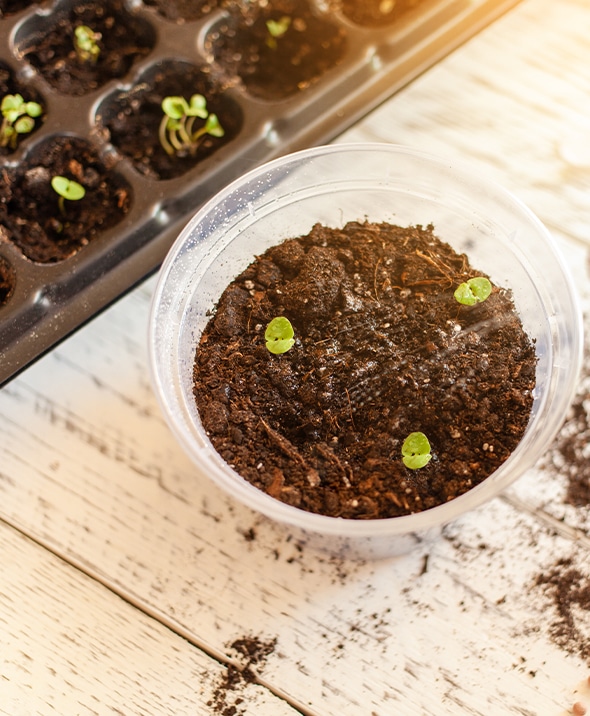
here’s how to grow microgreens
1. At the bottom of your container, evenly spread 1” of seed starting mix, making sure it’s not too compacted.
2. Sprinkle the seeds over the starting mix evenly, using your fingers or a small piece of cardboard to gently press them in.
3. Pour a small amount of water over the seeds– you only want the surface to be damp.
4. Take the plastic wrap and cover the container, then place in a sunlit window.
5. Be sure the microgreens get 4 hours of sunshine daily.
6. Use the water bottle to spritz the soil every day to keep it moist. Expect seedlings to appear in a week or less.
7. Once the seedlings sprout, remove the cover and keep misting daily. When the sprouts are about 3” tall, it’s harvest time.
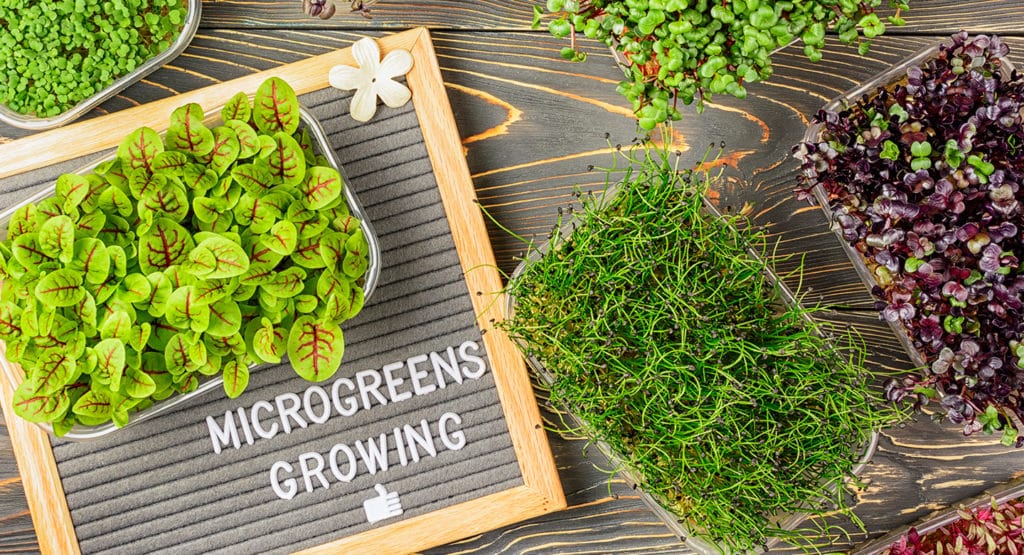
#easypeasy

green beans
aka Phaseolus Vulgaris
Bean gardeners also become accomplished engineers. Their fast-growing vines need poles, strings, trellises… there are so many varieties and so many ways to train them.
variations
There are many variations of green beans, such as: pinto beans, lima beans, wax beans, Romano beans, and Royal Burgundy
light
full sun
These rapid-growing veggies like 6 to 8 hours of solar power.
water + feeding
average needs
Water the plants once a week in dry weather. Keep an eagle eye on the soil when the beans are blooming and starting their little pods. Do not let the soil dry out during this key time. Dry conditions can cause your blooms to drop too early and that will reduce your bean count. Consistent soil moisture yields the best quality harvest. Water thoroughly once a week if there’s no rain.
toxic
basically non-toxic
Some beans may upset the digestion of cats and dogs. Green beans are generally safe in small quantities.
size
small to medium
Bush beans grow to 2 feet tall and are the stand alone variety. Staked or pole beans can grow an impressive 10 to 15 feet along, or even straight up.
pro tip
don’t start indoors
They have fragile roots, that don’t transplant well. The good new? Beans grow so quickly (about 45 days from planting to harvest) that you don’t need to start them early.
fun fact
we’re number three!
After tomatoes, and then peppers, beans are the most beloved garden vegetable.
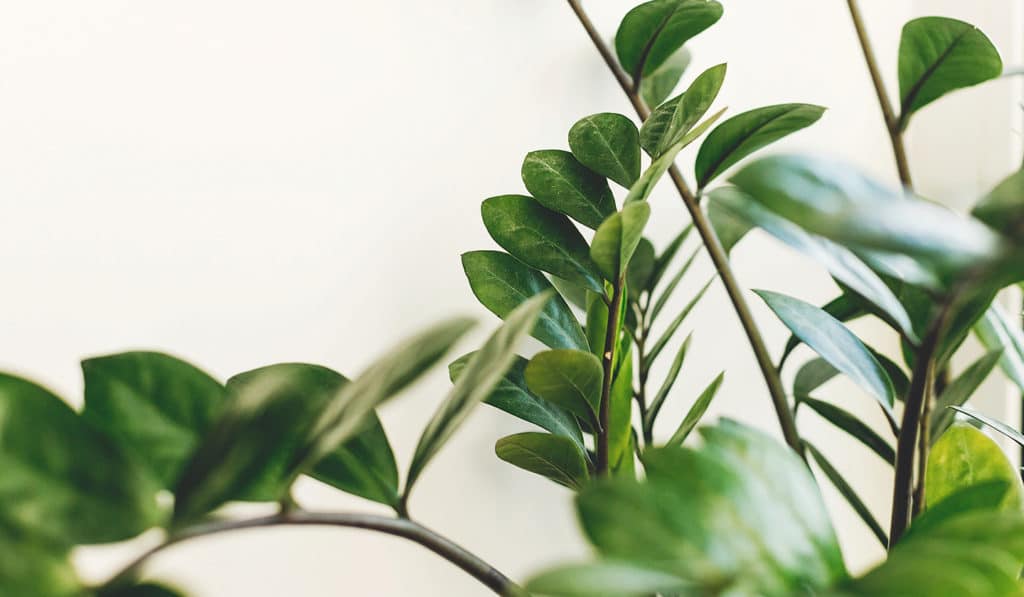
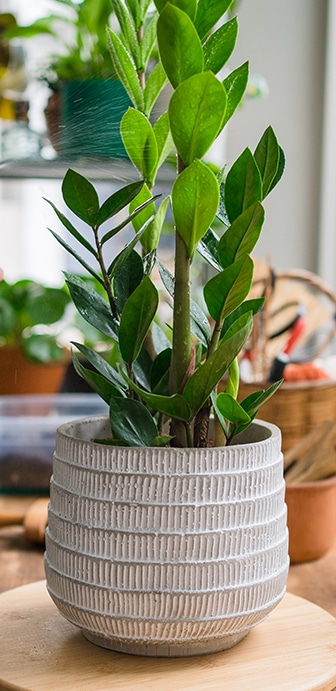
beyond the basics
-
soil & potting
ZZ prefers a light, well-draining potting soil like Miracle-Gro Cactus, Palm and Succulent Potting Mix. Or, use regular potting soil and add some potting sand or perlite. Ensure the pot has good drainage and avoid standing water. Empty drainage trays if you see water collecting.
-
when to repot
In the right light, ZZ grows quickly. Amazingly, they actually enjoy being a little rootbound, so you don’t need to repot as often as other plants. Repot every 3 to 4 years in the Spring, especially with younger plants. Increase pot by 2 inches every time. If you want to slow down growth, do some root trimming. In later years you can replace the top couple inches of soil instead of completely repotting.
-
propagation
Even propagation is easy with ZZ. Dig up the thick root ball and cut it in half. You can technically propagate your ZZ via stem and leaf cuttings, but it’s so much harder than cutting the root ball that we don’t recommend it.
-
pest control
Can get mealybugs and spider mites. When you’re dusting those glossy leaves, inspect the undersides. Check out our Pest control section in Plant 101 for how to identify and deal with pests on your plant!
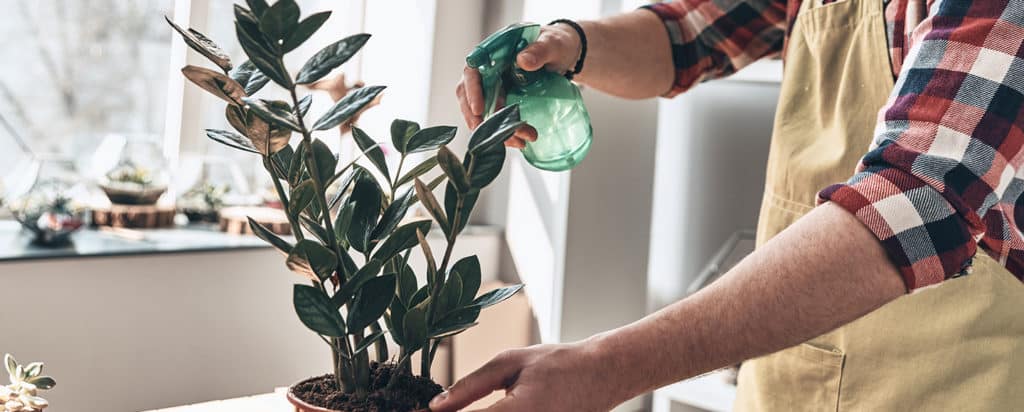
troubleshooting
-
why the yellowing leaves?
Overwatering. By far the most common problem with ZZ. Especially in Winter when it doesn’t need (or want) much water at all. If the plant has been sitting in water, it may have root rot. This problem is no big deal if you catch it early. First, stop watering! Let’s dry out that soil. Check your pot’s drainage. Does it have a hole that allows excess water to escape? Help things dry by poking holes in the soil. This will get oxygen to the roots. You can also put the pot (with drainage holes) in a tray that’s lined with a layer of dry soil. It acts like a sponge to draw out extra moisture. Now, let’s check for root rot. Dig down and cut out any that look affected. If things are really bad, consider repotting entirely with new soil. Moving forward, allow ZZ’s soil to dry between watering. The top couple inches should be dry to the touch. For more information check out our Plant 101 section.
-
why do I have many dropping leaves?
Probably stressed. ZZ is tough but not invincible. If you’ve moved it recently that may have stressed it out. Did you just bring it home from the nursery? That’s a big change. Leaf drop is most common when ZZ was in shade and suddenly put in full sun. Ease you plant to new area when you can. If you haven’t moved it recently, check for wet or totally bone-dry soil. See above for proper watering regimen.
-
what’s with the brown patches on leaves?
Sunburn. It can handle some direct sun, but long Summer exposure can burn even the mighty ZZ. Try moving your plant somewhere that’s still bright, but with indirect light.
-
why isn’t it growing?
Not enough light. ZZ survives well in low light, but it takes bright light for ZZ to thrive and grow. If you’re happy with the size, keep it shady. If you want to see ZZ’s impressive growth in action, move it somewhere with plenty of bright and mostly indirect light. Make this change gradually if you can. Increase your watering (but just a bit) to suit the increased light.
-
why the soft or drooping stems?
Again, overwatering. This is stem rot, spreading up from root rot. Remove all those mushy stems or trim away anything that looks like rot. Now let’s dry the soil and check the roots. Check your pot’s drainage. Does it have a hole that allows excess water to escape? Help things dry by poking holes in the soil. This will get oxygen to the roots. You can also put the pot (with drainage holes) in a tray that’s lined with a layer of dry soil. It acts like a sponge to draw out extra moisture. Now, let’s check for root rot. Dig down and cut out any that look affected. If things are really bad, consider repotting entirely with new soil. Moving forward, allow ZZ’s soil to dry between watering. The top couple inches should be dry to the touch. For more information check out our Plant 101 section.

green beans
aka Phaseolus Vulgaris
Bean gardeners also become accomplished engineers. Their fast-growing vines need poles, strings, trellises… there are so many varieties and so many ways to train them.
variations
There are many variations of green beans, such as: pinto beans, lima beans, wax beans, Romano beans, and Royal Burgundy
light
full sun
These rapid-growing veggies like 6 to 8 hours of solar power.
water + feeding
average needs
Water the plants once a week in dry weather. Keep an eagle eye on the soil when the beans are blooming and starting their little pods. Do not let the soil dry out during this key time. Dry conditions can cause your blooms to drop too early and that will reduce your bean count. Consistent soil moisture yields the best quality harvest. Water thoroughly once a week if there’s no rain.
toxic
basically non-toxic
Some beans may upset the digestion of cats and dogs. Green beans are generally safe in small quantities.
size
small to medium
Bush beans grow to 2 feet tall and are the stand alone variety. Staked or pole beans can grow an impressive 10 to 15 feet along, or even straight up.
pro tip
don’t start indoors
They have fragile roots, that don’t transplant well. The good new? Beans grow so quickly (about 45 days from planting to harvest) that you don’t need to start them early.
fun fact
we’re number three!
After tomatoes, and then peppers, beans are the most beloved garden vegetable.
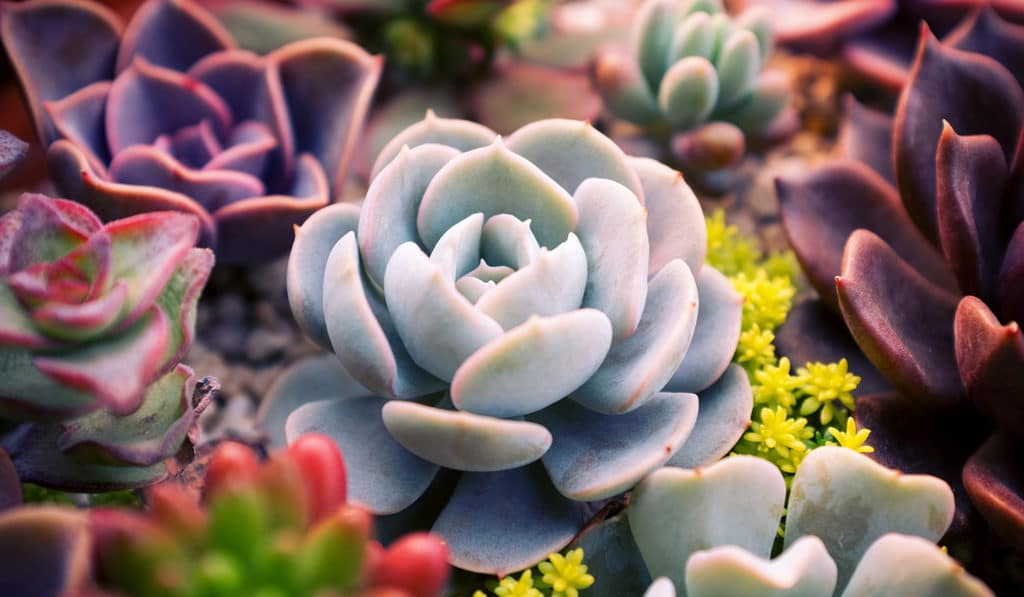
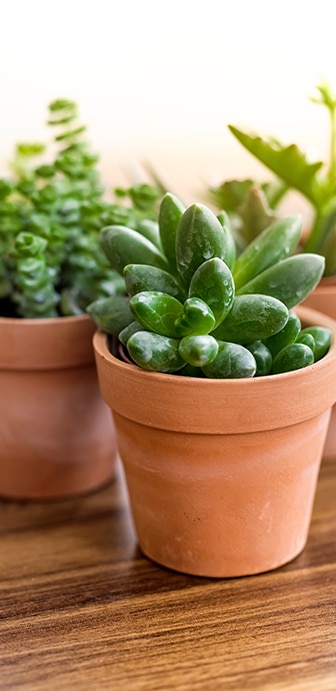
beyond the basics
-
soil & potting
These desert dwellers prefer a light, well-draining potting soil like Miracle-Gro Cactus, Palm and Succulent Potting Mix. Or, use regular potting soil and add some potting sand or perlite. A layer of sand on the top will help prevent rot. Ensure the pot has good drainage and aloe should never sit in water. Empty drainage trays if you see water collecting.
-
when to repot
Repot every 1 to 2 years in the Spring, especially with younger plants. Increase pot diameter by 2 inches every time. Want them to stay cute and little? You can stunt the growth by root trimming. In later years you can replace the top couple inches of soil instead of completely repotting.
-
propagation
Making new succulent plant babies is easy. In fact many propagate on their own. You will notice little mini versions starting grow. These “pups” can be gently separated potted as a new plant. If you’re not getting pups, remove a leaf, let it dry for a couple of days and place it on some moist soil. It should sprout roots, and voila! You have an ultra mini plant.
-
pest control
Succulents don’t typically suffer from pests, but they can sometimes get bugs. Gnats are most likely. Inspect those juicy little leaves regularly. Check out our Pest control section in Plant 101 for how to identify and deal with pests on your plant!
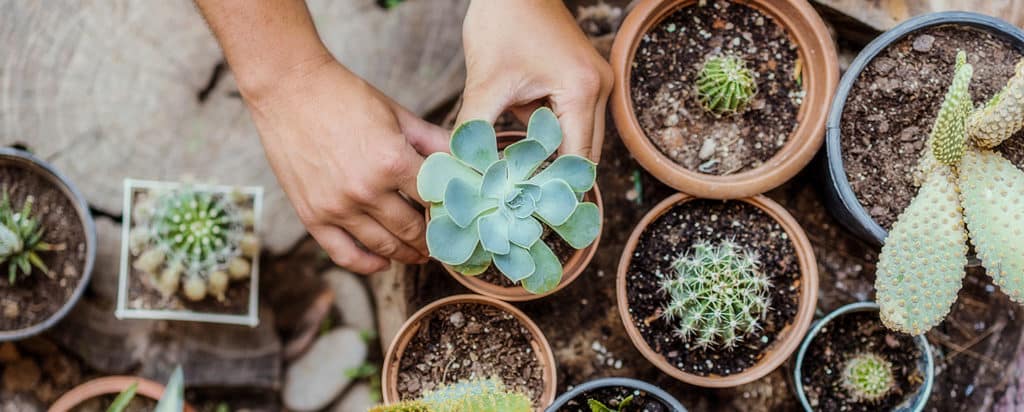
troubleshooting
-
why are the eaves turning brown, red or reddish brown?
A couple of possibilities. Maybe too much direct summer sun. Or possibly overwatering or root damage. First, moving your plant to a still-bright but less sun-blasted spot. Reduce the watering and follow our watering instructions above. If your succulent buddy still doesn’t bounce back, check for root damage.
-
what’s causing these dark spots? brown or mushy leaves?
Almost certainly too much water. This problem is no big deal if you catch it early. First, stop watering! Let’s dry out that soil. Check your pot’s drainage. Does it have a hole that allows excess water to escape? Help things dry by poking holes in the soil. This will get oxygen to the roots. You can also put the pot (with drainage holes) in a tray that’s lined with a layer of dry soil. It acts like a sponge to draw out extra moisture. Now, let’s check for root rot. Dig down and cut out any that look affected. If things are really bad, consider repotting entirely with new soil. Moving forward, water only when the soil is totally dry and make sure you water the soil, not the leaves. Water can collect between the leaves at its base, and start to rot. A thin layer of sand on top of the soil can reduce pooling water up top.
For more information check out our Plant 101 section.
-
pale or yellowing leaves?
Not enough light and/or overwatering. If the whole plant has yellowed or gone pale, it definitely needs more light. Move your friend to a brighter spot and resist the urge to overwater. Let the top two inches of soil get dry before watering again.
-
ew, what’s with the shrunken, wrinkled leaves?
Your plant needs a drink. Underwatering a succulent is hard to do, but it does happen. Give small amounts of water for three days in a row. Make sure you do this at soil level, not poured on the leaves. This is the ONE TIME it’s okay to do a little misting. A little does a lot. Resist the urge to water all at once! Your friend will plump up in a few days.
-
why isn’t my succulent growing?
Not enough light. It takes a lot of bright (mostly indirect) light to get succulents growing. If you’re not noticing any growth, or the new growth looks pale, it’s time to move to brighter spot. You may need slightly more frequent watering after the move. Note, succulents grow in slow motion at the best of times, so a little patience goes a long way.

green beans
aka Phaseolus Vulgaris
Bean gardeners also become accomplished engineers. Their fast-growing vines need poles, strings, trellises… there are so many varieties and so many ways to train them.
variations
There are many variations of green beans, such as: pinto beans, lima beans, wax beans, Romano beans, and Royal Burgundy
light
full sun
These rapid-growing veggies like 6 to 8 hours of solar power.
water + feeding
average needs
Water the plants once a week in dry weather. Keep an eagle eye on the soil when the beans are blooming and starting their little pods. Do not let the soil dry out during this key time. Dry conditions can cause your blooms to drop too early and that will reduce your bean count. Consistent soil moisture yields the best quality harvest. Water thoroughly once a week if there’s no rain.
toxic
basically non-toxic
Some beans may upset the digestion of cats and dogs. Green beans are generally safe in small quantities.
size
small to medium
Bush beans grow to 2 feet tall and are the stand alone variety. Staked or pole beans can grow an impressive 10 to 15 feet along, or even straight up.
pro tip
don’t start indoors
They have fragile roots, that don’t transplant well. The good new? Beans grow so quickly (about 45 days from planting to harvest) that you don’t need to start them early.
fun fact
we’re number three!
After tomatoes, and then peppers, beans are the most beloved garden vegetable.
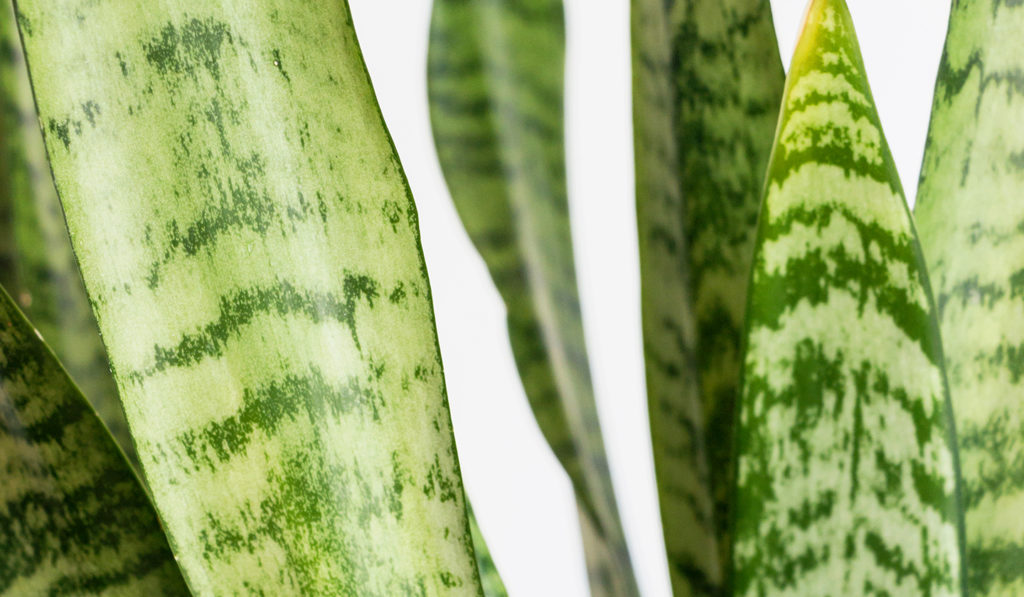
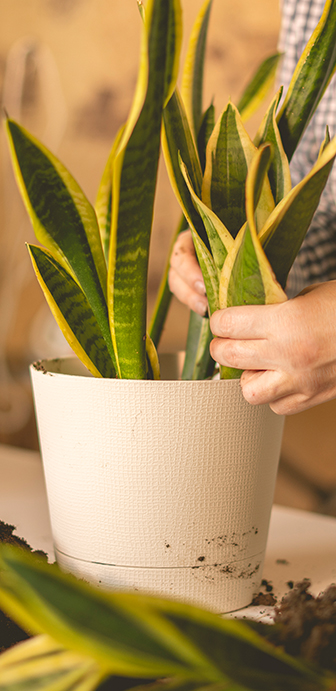
beyond the basics
-
soil & potting
It’s a desert plant, so use a light, well-draining potting soil like Miracle-Gro Cactus, Palm and Succulent Potting Mix. Or, use regular potting soil and add some potting sand or perlite. A layer of sand on the top will help prevent rot. Ensure the pot has good drainage. Snakes should never sit in water. Empty drainage trays if you see water collecting.
-
when to repot
Every 2 to 3 years in the Spring, especially in the earlier years. Increase the pot size by 2 inches each repotting. In later years you can replace the top couple inches of soil instead of completely repotting. Snake growing too fast? Slow the growth by trimming the roots.
-
propagation
Grab a sharp knife or scissors, find one of the healthiest leaves, and cut it off at the base of the plant. Then cut the leaf into multiple horizontal strips (about 3 inches each). Let the ends dry for two days then put them in water to stimulate root growth. This step could take 2 to 3 weeks. When you’ve got roots, you’re ready to pot.
-
pest control
Mealybugs are most common. When you do your regular dusting, inspect the leaves. Check out our Pest control section in Plant 101 for how to identify and deal with pests on your plant!
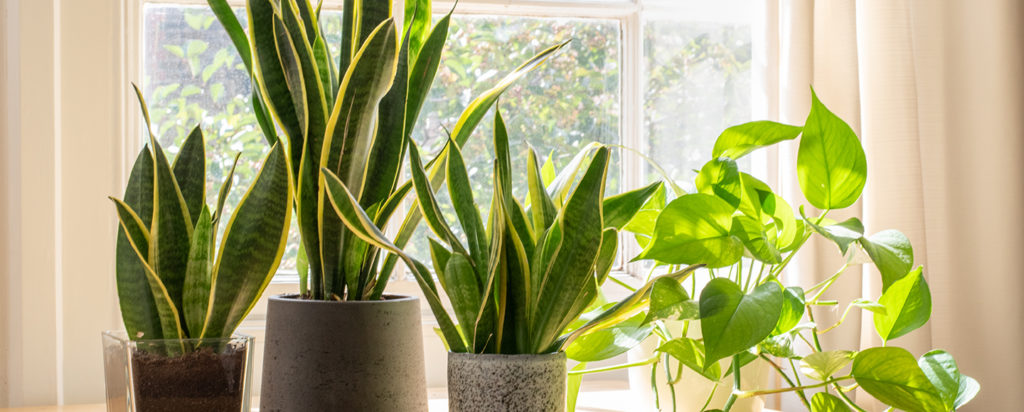
troubleshooting
-
why are the leaves falling sideways?
Multiple possibilities. All easily fixed. Firstly, this may not be a problem at all. Overly mature leaves naturally fall away to make room new growth. But if many leaves are falling over before their time, it’s probably over or under watering. If the soil is bone dry, add a moderate amount of water for a few days in a row. Then be more diligent with your watering routine. If the soil is soaked, check your drainage and let the soil fully dry before starting a better routine. Light issues: Snake plants do well in low light but if they’re getting no light leaves may start to keel over. Move into some nice, bright, indirect light. Other causes? Maybe your Snake plant has outgrown its pot. This can cause it to become root-bound. It’s time to repot in something at least 2 inches wider.
-
why do I have yellowing leaves?
Probably overwatering. Are the leaves also a bit mushy? These are signs of root rot. Not to worry, when caught early this is easily fixable. Reduce watering and ensure the soil dries out before watering. Check your pot’s drainage. Does it have a hole that allows excess water to escape? Help things dry by poking holes in the soil. This will get oxygen to the roots. You can also put the pot (with drainage holes) in a tray that’s lined with a layer of dry soil. It acts like a sponge to draw out extra moisture. Now, let’s check for root rot. Dig down and cut out any that look affected. If things are really bad, consider repotting entirely with new soil. For more information check out our Plant 101 section.
-
why does this snake have wrinkled leaves?
Under-watering. Check the soil. It’s probably bone dry. Instead of dousing it all at once. Give your Snake plant a medium amount of water three days in a row. Nice and easy. Make sure it’s never sitting in pools of water. Those droopy leaves should rebound by day three.

green beans
aka Phaseolus Vulgaris
Bean gardeners also become accomplished engineers. Their fast-growing vines need poles, strings, trellises… there are so many varieties and so many ways to train them.
variations
There are many variations of green beans, such as: pinto beans, lima beans, wax beans, Romano beans, and Royal Burgundy
light
full sun
These rapid-growing veggies like 6 to 8 hours of solar power.
water + feeding
average needs
Water the plants once a week in dry weather. Keep an eagle eye on the soil when the beans are blooming and starting their little pods. Do not let the soil dry out during this key time. Dry conditions can cause your blooms to drop too early and that will reduce your bean count. Consistent soil moisture yields the best quality harvest. Water thoroughly once a week if there’s no rain.
toxic
basically non-toxic
Some beans may upset the digestion of cats and dogs. Green beans are generally safe in small quantities.
size
small to medium
Bush beans grow to 2 feet tall and are the stand alone variety. Staked or pole beans can grow an impressive 10 to 15 feet along, or even straight up.
pro tip
don’t start indoors
They have fragile roots, that don’t transplant well. The good new? Beans grow so quickly (about 45 days from planting to harvest) that you don’t need to start them early.
fun fact
we’re number three!
After tomatoes, and then peppers, beans are the most beloved garden vegetable.
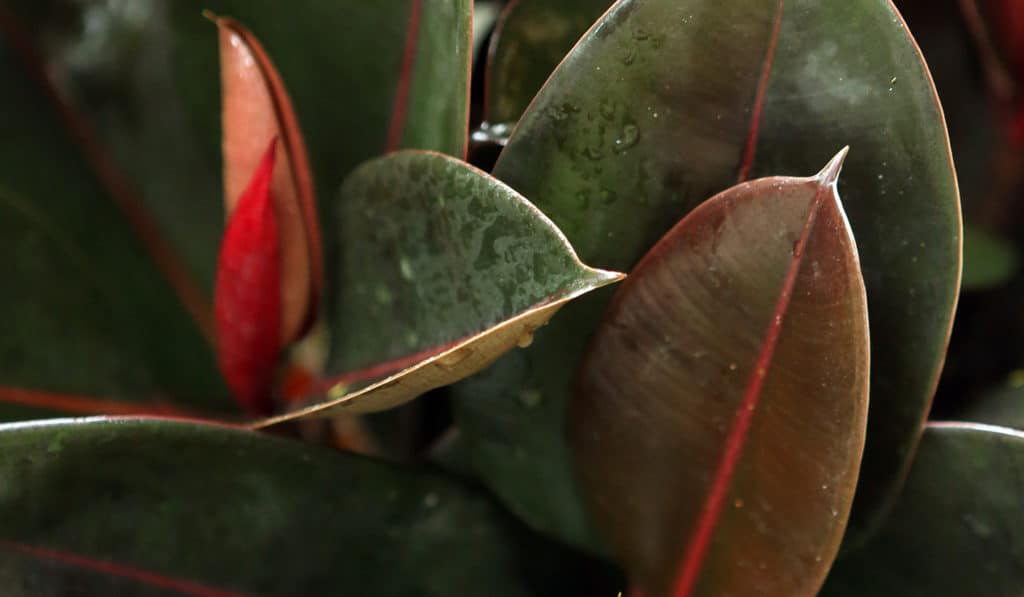
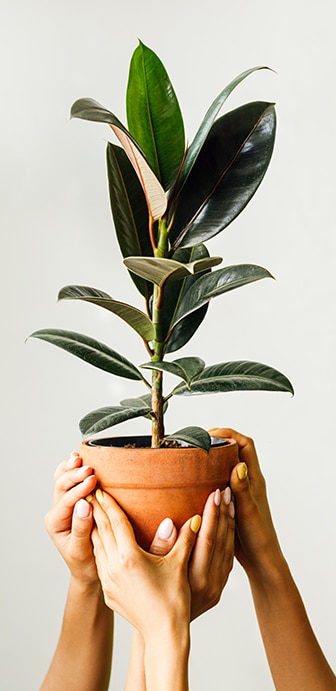
beyond the basics
-
soil & potting
Use a rich, well-draining, indoor potting soil, like Miracle-Gro® Indoor Potting Mix. Ensure your pot has good drainage. Don’t let it sit in water and if you notice water pooling in the drainage tray, empty it.
-
when to repot
Repot every 1 to 2 years in the Spring, especially with younger plants. Increase pot by 2 inches every time. When your Rubber plant is older and becomes a big fella, repotting gets hard! So you can just replace the top few inches of soil.
-
propagation
Be careful what you start, because these plants get big! Pick a stem showing thick, healthy leaves and cut halfway up the stem. Milky sap will come out, and it’s an irritant you want to avoid. Remove the bottom leaves to give yourself a nice stretch of stem. It’s not the easiest propagator, so you’ll need rooting hormone to encourage roots. Dip your stem in the hormone and pot it moist soil, like Miracle-Gro® Indoor Potting Mix.
-
pest control
Look for mealybugs, scale insects, and spider mites. During your regular leaf cleaning, inspect the underside of each leaf. Check out our Pest control section in Plant 101 for how to identify and deal with pests on your plant!
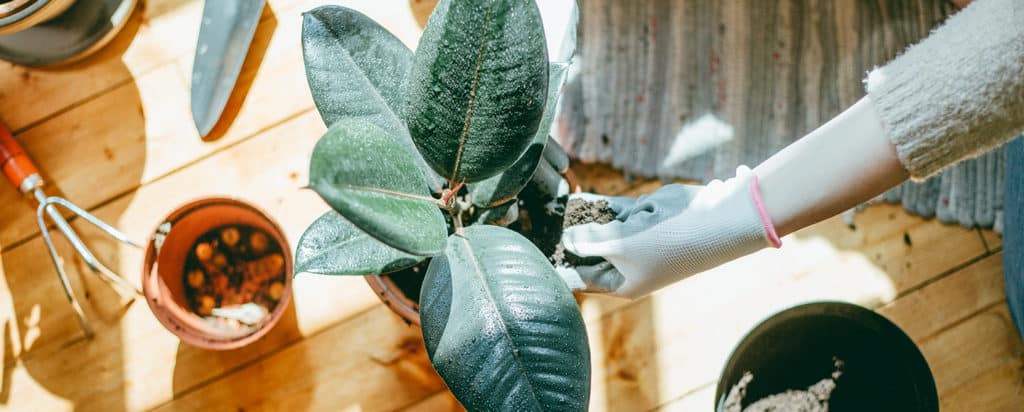
troubleshooting
-
why are there patchy, pale spots on leaves?
Too much direct sunlight. Rubber plants don’t like direct sun. It’s too hot on those big, broad leave, and they’ll lose moisture, causing these patchy pale spots. Shade the window or move your plant away from this direct sun. Sadly, the spots don’t heal, so consider removing the most damaged ones.
-
what’s with all the dropping leaves?
Rubber plants get stressed out easily. Any sudden change is likely to trigger leaf drop. Blasts of air conditioning or furnace heat. Cold drafts under a door. Being taken home from the nursery is also a big change in your plant’s life! Expect droppage. If you have not moved it recently and you can’t source any sudden temp changes then it could be overly dry air, or under watering and feeding. Review your care routine and your Rubber plant should… bounce back.
-
why are there dark Patches or spots on leaves?
Possible sunburn, or worse, leaf spot. If your Rubber plant is sitting in direct sunlight, it’s probably sunburn. Especially if it’s getting hot Summer sun. Move to still-bright indirect spot. If it’s not sunburn, it could be leaf spot, a fungal disease. Overwatering, especially in the winter, is usually the cause. First, avoid spreading to other plants by separating them physically. Remove all spotty leaves and check for plant debris in the pot. If you’re misting, stop. You want the leaves to get dry. Treat with fungicide.
-
why do I have yellowing, wilting leaves?
Probably root rot from overwatering. Do you also notice mushy stems and/or slower growth? These are all signs of root rot. Not to worry, when caught early this is easily fixable. Reduce watering and ensure the soil dries out before watering. Check your pot’s drainage. Does it have a hole that allows excess water to escape? Help things dry by poking holes in the soil. This will get oxygen to the roots. You can also put the pot (with drainage holes) in a tray that’s lined with a layer of dry soil. It acts like a sponge to draw out extra moisture. Now, let’s check for root rot. Dig down and cut out any that look affected. If things are really bad, consider repotting entirely with new soil. For more information check out our Plant 101 section.

